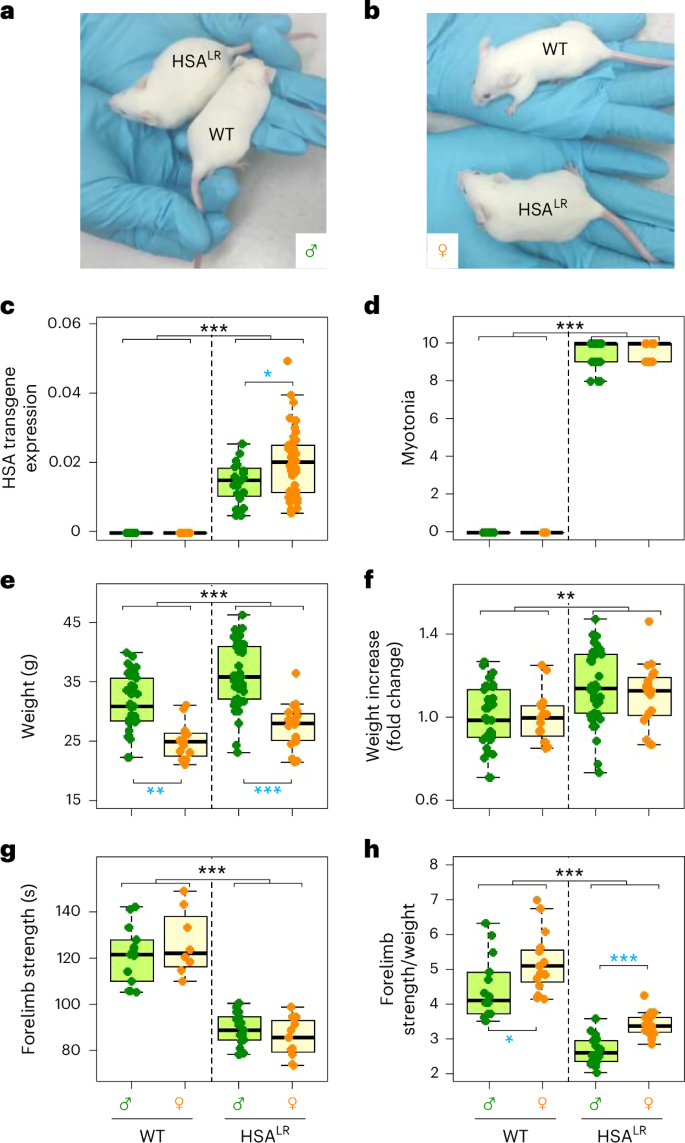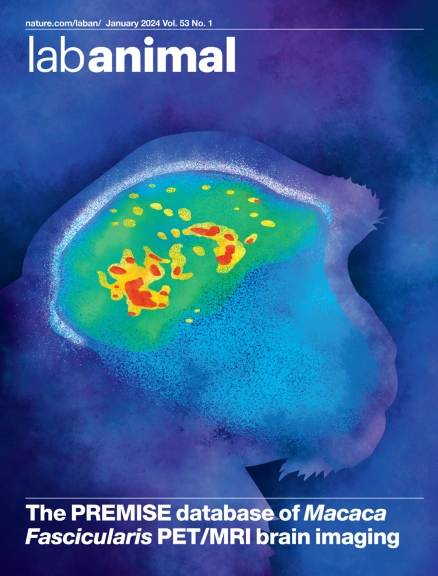Use of HSALR female mice as a model for the study of myotonic dystrophy type I
IF 5.9
3区 农林科学
Q1 VETERINARY SCIENCES
引用次数: 0
Abstract
HSALR mice are the most broadly used animal model for studying myotonic dystrophy type I (DM1). However, so far, HSALR preclinical studies have often excluded female mice or failed to document the biological sex of the animals. This leaves an unwanted knowledge gap concerning the differential development of DM1 in males and females, particularly considering that the disease has a different clinical presentation in men and women. Here we compared typical functional measurements, histological features, molecular phenotypes and biochemical plasma profiles in the muscles of male and female HSALR mice in search of any significant between-sex differences that could justify this exclusion of female mice in HSALR studies and, critically, in candidate therapy assays performed with this model. We found no fundamental differences between HSALR males and females during disease development. Both sexes presented comparable functional and tissue phenotypes, with similar molecular muscle profiles. The only sex differences and significant interactions observed were in plasma biochemical parameters, which are also intrinsically variable in patients with DM1. In addition, we tested the influence of age on these measurements. We therefore suggest including female HSALR mice in regular DM1 studies, and recommend documenting the sex of animals, especially in studies focusing on metabolic alterations. This will allow researchers to detect and report any potential differences between male and female HSALR mice, especially regarding the efficacy of experimental treatments that could be relevant to patients with DM1. The authors compare muscle function, histology and molecular markers, and biochemical plasma profiles in male and female HSALR mice to identify potential sex differences in this mouse model of myotonic dystrophy type I.


以HSALR雌性小鼠为模型研究I型肌强直性营养不良
HSALR小鼠是研究I型肌强直性营养不良(DM1)最广泛使用的动物模型。然而,到目前为止,HSALR临床前研究经常排除雌性小鼠或未能记录动物的生物学性别。这在男性和女性DM1的差异发展方面留下了不必要的知识差距,特别是考虑到该疾病在男性和女性中具有不同的临床表现。在这里,我们比较了雄性和雌性HSALR小鼠肌肉的典型功能测量、组织学特征、分子表型和生化血浆谱,以寻找任何显著的性别差异,以证明在HSALR研究中排除雌性小鼠是合理的,更重要的是,在用该模型进行的候选治疗分析中。我们发现HSALR男性和女性在疾病发展过程中没有根本差异。两性都表现出类似的功能和组织表型,具有相似的分子肌肉图谱。观察到的唯一性别差异和显著相互作用是血浆生化参数,这些参数在DM1患者中也是内在可变的。此外,我们测试了年龄对这些测量的影响。因此,我们建议在常规的DM1研究中纳入雌性HSALR小鼠,并建议记录动物的性别,特别是在关注代谢改变的研究中。这将使研究人员能够检测和报告雄性和雌性HSALR小鼠之间的任何潜在差异,特别是关于可能与DM1患者相关的实验性治疗的疗效。
本文章由计算机程序翻译,如有差异,请以英文原文为准。
求助全文
约1分钟内获得全文
求助全文
来源期刊

Lab Animal
农林科学-兽医学
CiteScore
0.60
自引率
2.90%
发文量
181
审稿时长
>36 weeks
期刊介绍:
LabAnimal is a Nature Research journal dedicated to in vivo science and technology that improves our basic understanding and use of model organisms of human health and disease. In addition to basic research, methods and technologies, LabAnimal also covers important news, business and regulatory matters that impact the development and application of model organisms for preclinical research.
LabAnimal's focus is on innovative in vivo methods, research and technology covering a wide range of model organisms. Our broad scope ensures that the work we publish reaches the widest possible audience. LabAnimal provides a rigorous and fair peer review of manuscripts, high standards for copyediting and production, and efficient publication.
 求助内容:
求助内容: 应助结果提醒方式:
应助结果提醒方式:


